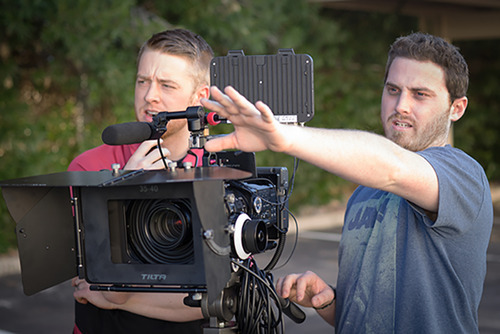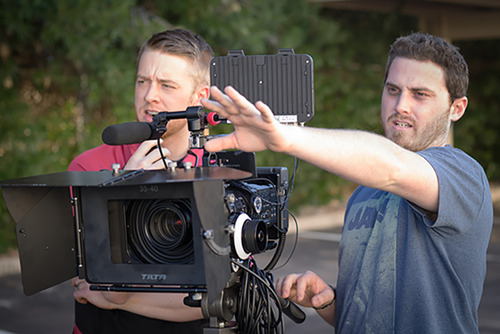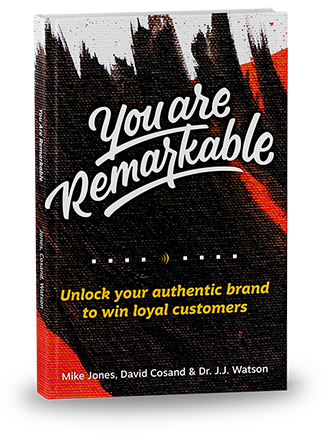
So much goes into marketing—even more than most people realize. This is especially true when it comes to advertisements. You have to understand perception, the way people will view your ad, and know the different techniques to draw your viewer’s eyes to where you want them to go.
Filmmaking is a unique skill set that can be easily overlooked.
I’m sure you’ve heard about all the different commercials in the super bowl this year (if not, go here for our roundup). Some of them were really good! But instead of rating them in terms of “funny” or “morbidly depressing”, what if we dig a bit deeper?
What if we take a filmmaker’s perspective on these commercials?
Resound will call on our resident film expert, Garrett H. McConchie, to give us a filmmaker’s view.
Resound: Hey Garrett. Let’s start with what was arguably one of the most underrated commercials of the Super Bowl: Dodge, celebrating 100 years. Wieden+Kennedy was responsible for this spot. What did you think?
Garrett: I loved it! The lighting was everything in this commercial. Even more so than dialogue. They used very dark shadows combated with bright highlights. This is dramatic, sure, but even beyond that, using the lighting in that way creates an interesting contrast that draws attention to the wrinkles in people’s faces. Wrinkles have this unique way of portraying maturity and experience, don’t they? When you see an elderly person, you would imagine that they’ve been through a lot. They’ve seen it all, so to speak. This goes perfectly with the line that Dodge uses to end it, “You learn a lot in 100 years. Here’s to the next 100.”
Resound: Next up, “My Bold Dad,” from Saatchi & Saatchi LA and their client, Toyota. What did you think?
Garrett: I thought this was one of the—if not the—best commercials of the entire game. It had everything, including the waterworks at the end—don’t lie, you know you cried. It was very well directed, had great timing, and the ratio of flashbacks to current day shots being intertwined was spot on. This may seem subtle, but the emotional effect of this can be incredibly tricky to capture. If done poorly, it would just be confusing, but done well, it comes off as a very emotional piece. Brilliantly done!
Resound: Finally, let’s talk about Coca-Cola, and their “Make It Happy” commercial. We’ve all kind of come to expect good advertisements with a powerhouse brand like Coca-Cola, but did you think it matched up to past years?
Garrett: Absolutely. These guys crushed it. Another winner from Wieden+Kennedy here. There’s really nothing not to love about this. The cinematography is great, and they have always been the “spread the joy” type of company. It stays true to who they are, while at the same time, delivering some feel good moments, which was a nice break from other emotional pieces, like Debbie Downer Nationwide. I want to focus on more than just the story behind the ad though. Color grading is key in this commercial. Again, it’s something that most people won’t notice, but it makes a monumental impact. In the beginning, while they are showing all the hatred, there are dark undertones throughout each different frame…lots of blacks, greys, and dark, “computer/tech” blues that fill the screen. Then once the coke spills, they switch to more colorful and bright effects. They tell the story in the colors that they use.
Resound: Do you have any advice for us on how to watch commercials more critically in the future?
Garrett: Something interesting I like to do with movies to help me analyze them better is to watch them on mute. I know this sounds crazy, but if you have an opportunity to do this, you shouldn’t pass it up (seriously Pete…you shouldn’t pass). Reason being: a good director can tell a story with both color tones and camera angles. In a similar way, if you watch this commercial on mute, nothing changes. The colors tell the story, whether you realized it or not. My hat goes off to Wieden+Kennedy this year for making both the Dodge Wisdom and Make It Happy commercials, along with Saatchi & Saatchi LA for the My Bold Dad commercial.
Resound: What do you think filmmaking can teach us about marketing?
Garrett: Some of the best tricks in marketing can be things that the brain sees but you don’t consciously recognize. For instance, numerous companies have done this with their logos. But it doesn’t have to end with design and logos. Directors have been doing this since the beginning of film in your favorite movies … and yes, your favorite commercials too.



